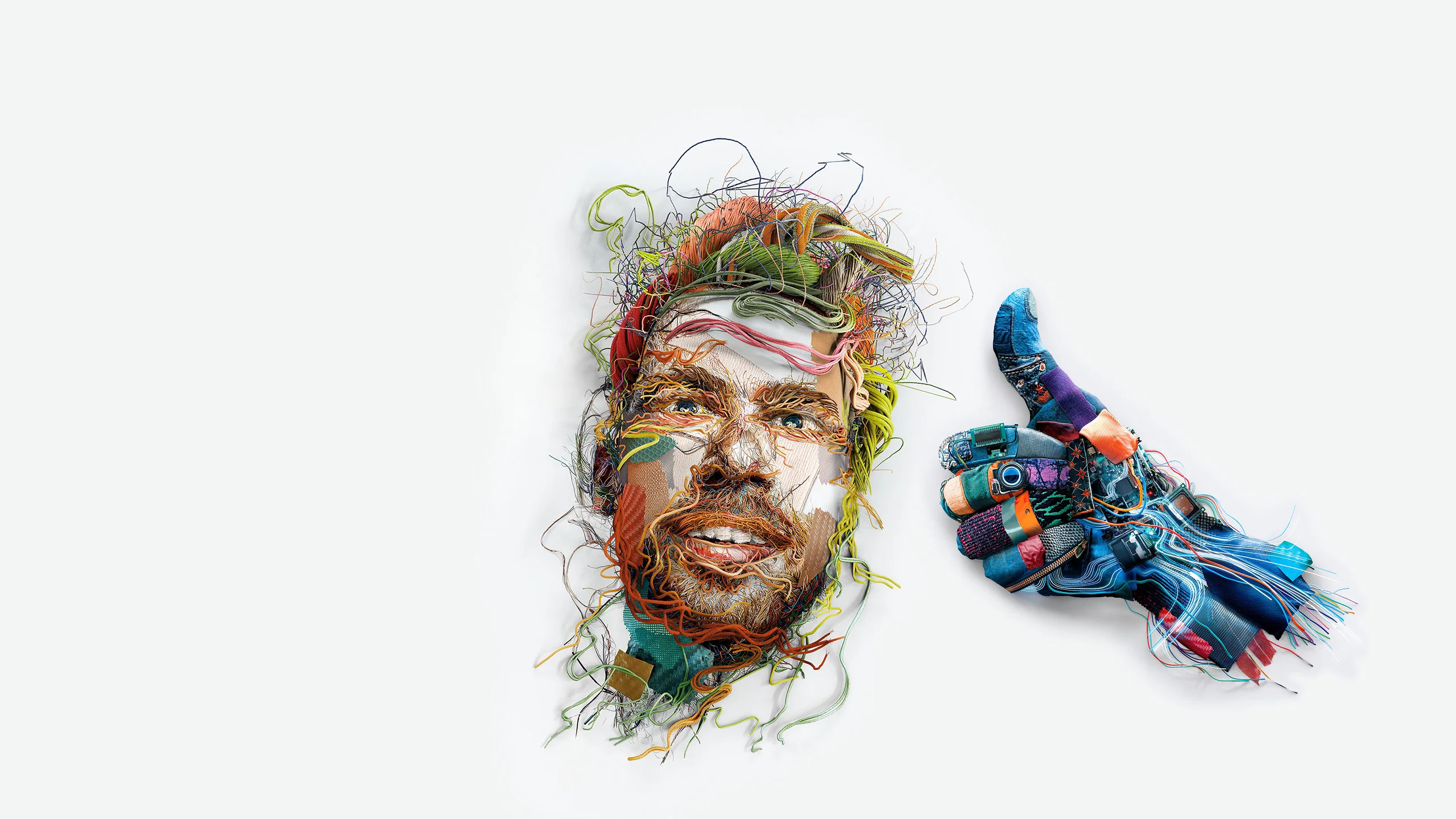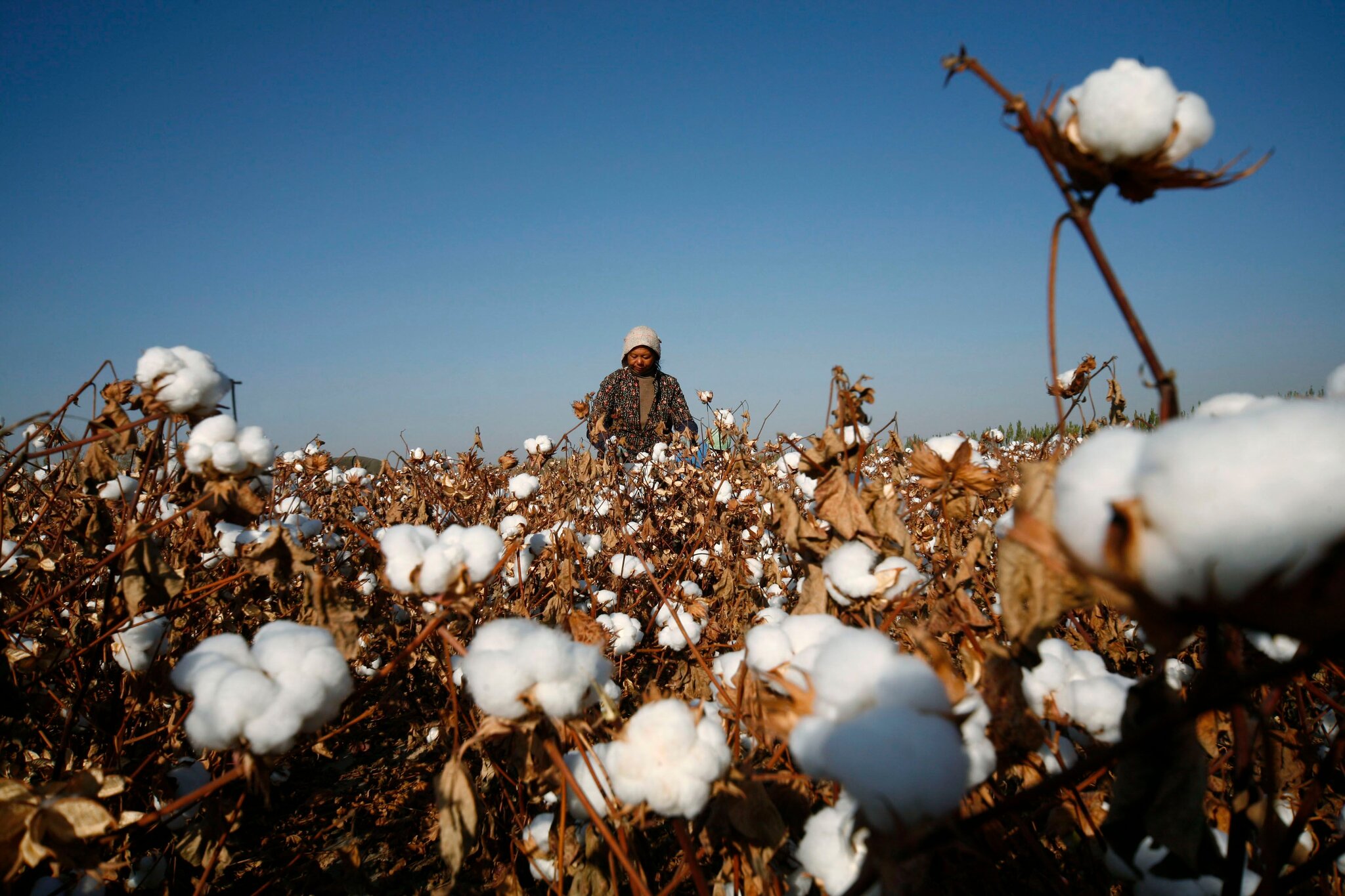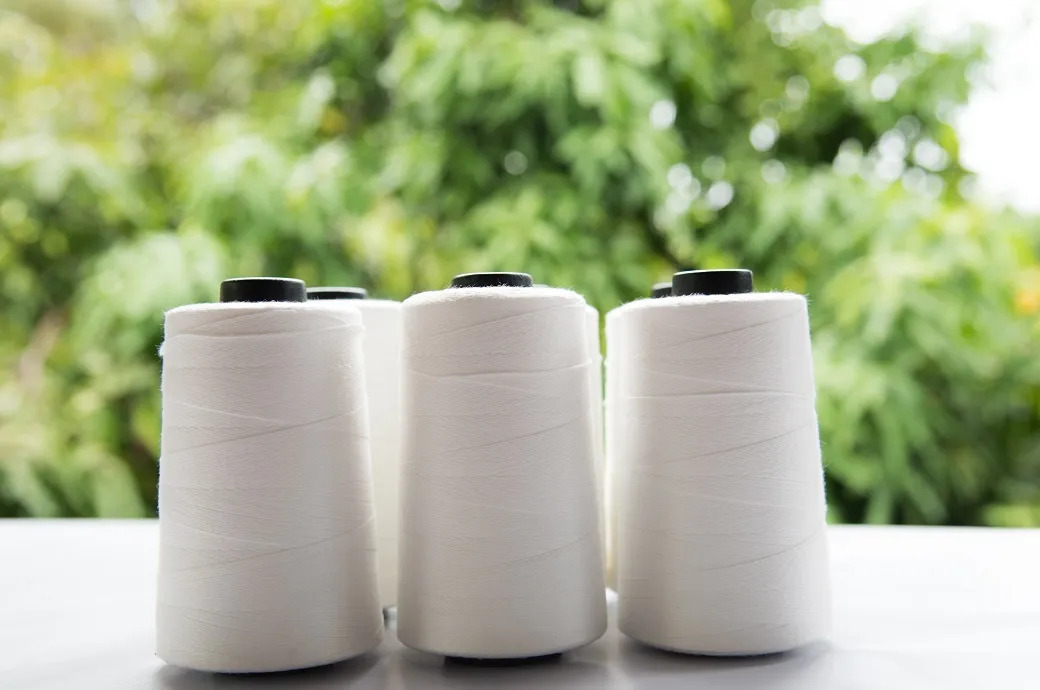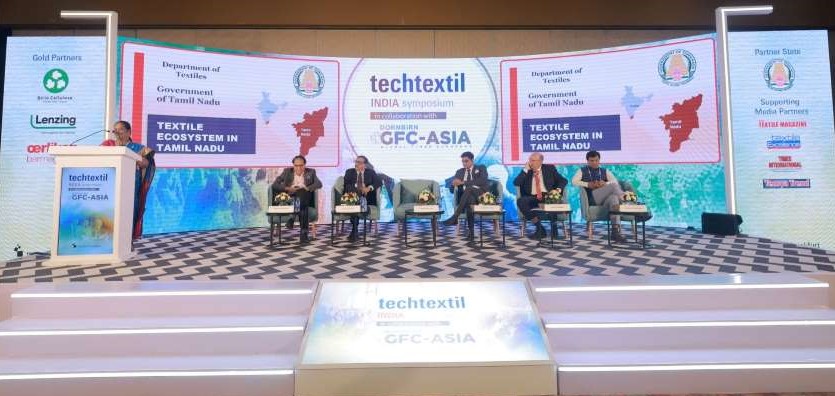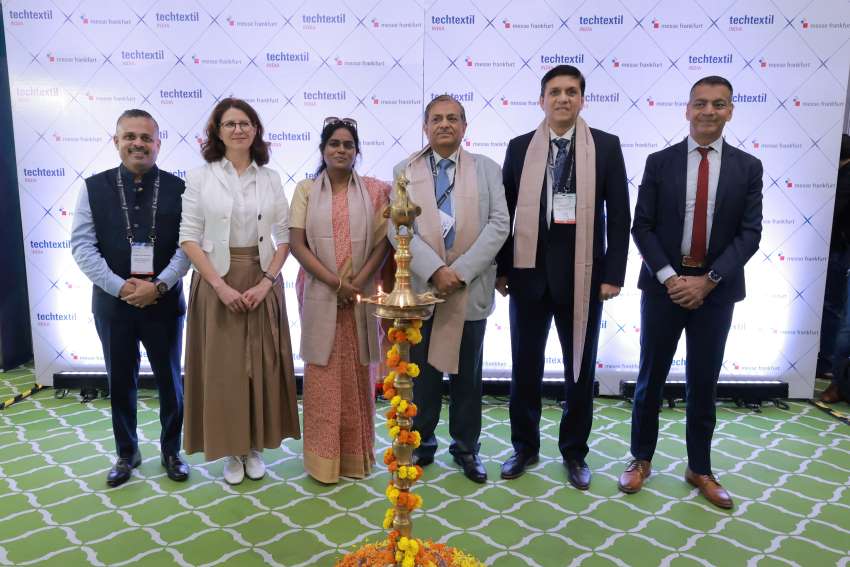FW
Cottco Holdings is sub-Saharan Africa’s biggest cotton company. It is seeking partnership to help in funding and reorganising its debt. The company, based in Zimbabwe, operates five ginneries in the southern African country with an annual processing capacity of 1,50,000 metric tons of seed cotton. Zimbabwe has about 2,00,000 cotton farmers.
It posted a loss of $10 million in the six months ended September 30 as the national harvest fell as some farmers switched to other crops with the international price of cotton falling 21 per cent over the past year.
As of September 30 the company had borrowings of $58 million and it applied to be placed under judicial management the next month. Trade in its shares on the Zimbabwe stock exchange was suspended. Cottco, which started as the Cotton Marketing Board in 1969, was sold to private investors in 1994 and began trading on the bourse in 1997.
Zimbabwe’s cotton crop is expected to plunge to between 90,000 and 1,00,000 tons this year from 1,45,000 tons last year. Some farmers have reduced their cotton growing area and moved to other crops including tobacco and soybeans. Increase in acreage for other crops has been higher in areas with generally higher average rainfall.
cottcoholdings.com/
About Rs 427 crores will be spent to promote geotechnical textiles in Northeast India. This will be help in stabilising roads, addressing the problem of landslides and preserving water bodies.
Apparel and garment making centers are being opened in every state in the region. Work on these centers for Nagaland has begun. Foundation stones have been laid for apparel and garment making centers in Manipur, Sikkim and Arunachal Pradesh. Under this scheme, each state will have one center with three units and 100 machines. For local entrepreneurs with the requisite background, the required facilities to start a unit will be provided in plug and play mode. Once such entrepreneurs get established, they can set up their own units, allowing the facility to be provided to new entrepreneurs.
The project is expected to be completed in three months. The total cost is Rs 18 crores and the project is expected to enhance skill upgradation, garment development and marketing. The initiative comes under the North East Region Textile Promotion Scheme (NERTPS) of the ministry of textiles. NERTPS is an umbrella scheme for the development of various segments of textiles i.e. silk, handlooms, handicrafts and apparels and garments. The scheme has a total outlay of Rs 1,038.10 crores in the 12th five year plan.
India's apparel exports growth rate slipped from 13.4 per cent in April 2014 to 9.24 per cent in April 2015 in dollar terms. In rupee terms the growth has fallen from 24.7 per cent to 13.58 per cent. Overall exports in April 2015 for readymade garments were Rs 9,063 crores.
However, apparel exports could register a positive growth of 9.24 per cent despite the subdued global economic cues. Non-traditional markets which have a 35 per cent share in India's garment exports are poised to receive a setback due to withdrawal of Chapter 3 benefits. The EU market constitutes 41 per cent of India's readymade garment exports. Market conditions in major markets like EU continue to be subdued. Moreover, India is facing a duty disadvantage of 9.6 per cent compared to competing countries like Bangladesh and Pakistan who have zero duty access under the EU GSP scheme.
The US constitutes 21.7 per cent of India’s readymade garment exports and market conditions in the US are recovering gradually. Prospects of considerable improvement of India’s chances in the market are rather limited due to competition from countries like Vietnam, Mexico, which have zero duty access under preferential treaties with the US.
Leading computerised flat knitting machine manufacturer Shima Seiki has created a new range of performance textiles, in collaboration with Redaelli Velluti. Shima Seiki and Redaelli Velluti are exploring new avenues by taking a different approach to classic textile technologies. What the two companies have in common is their use of distance fabrics. For Shima that means flat knitted spacer fabrics and for Redaelli Velluti it means double plush woven fabrics which are split down the middle to create velvets.
Shima’s latest technological contribution to the field of technical textiles is the SRY123LP computerised flat knitting machine. The machine features loop presser beds mounted above conventional needle beds that provide improved control over the press down of individual loops.
This presents unprecedented capability especially with partial knitting patterns and inlay patterns. Inlay fabric is produced on the SRY123LP by inserting yarn into existing knit fabric in a weaving like manner, opening opportunities for expansion into markets for wovens.
Inlay also suppresses typical stretch characteristics of knitted fabrics and since new materials such as metallic and monofilament yarns can be used for inlay structures, new applications in industrial textiles are realized. Shima Seiki exhibited the machine at Techtextil in Frankfurt this month.
www.shimaseiki.com/
Polyester manufacturer Indo Rama Synthetics has reported over 2.5 times jump in its standalone net profit for the quarter ended March 31. The quarter’s volume was almost 17 to 18 per cent higher, although net sales on a standalone basis declined by 6.72 per cent because of lower price of raw materials.
The company’s profit jumped as input prices have come down due to falling crude oil prices. It’s getting better margins as raw materials are cheaper now. However, for the financial year ended March 2015, Indo Rama's net loss on a consolidated basis widened to Rs 20.69 crores as against a net loss of Rs 13.55 crores in the previous fiscal.
The company’s consolidated net sales were up by 4.95 per cent to Rs 2,741.41 crores in 2014-15 as against Rs 2,611.89 crores in 2013-14. During the quarter under review, the company sold 84,138 tons as against 71,563 tons in the same quarter of last fiscal.
Indo Rama hopes to continue growing between 10 to 15 per cent with turnovers going up. Moreover, prices are also expected to stabilise this year. Meanwhile, the board of Indo Rama has recommended a 10 per cent dividend of Rs 1 per share for the financial year 2014-15.
www.indoramaindia.com/
Turkish denim manufacturer Calik Denim has launched a line of eco-friendly denims. The Oxygene fabric can be treated more quickly (about 50 to 60 per cent faster than with normal denim) and uses smaller quantities of chemicals, water and consumes less energy.
Oxygene is made with a special technology that combines specially dyed 100 per cent cotton yarns with regular finishing processes. A variety of laundry treatments can also be used including laser, ozone, sandpaper and enzymes. In addition, treated fabrics are soft to the touch and retain their shiny look after treatment even though no resins are used.
Calik was established as an integrated yarn and weaving factory in 1987. It has an annual production capacity of 40 million meters. The company leads the industry with its unique collections that include both commercial and innovative fabrics. It not only provides additional value to the economy by manufacturing sustainable and organic denim fabrics within its wide denim and gabardine fabric lines, it protects the environment as well.
The company has novel products with special finishes and sophisticated fabrics for indigo shirting. Calik Denim ranks among the top 10 premium denim manufacturers of Turkey and is one of the top denim exporters in Turkey.
www.calikdenim.com/
Lenzing profits for the first quarter of 2015 climbed by 115.3 per cent compared to the first quarter of 2014. Consolidated revenue for Q1 saw a rise of 5.1 per cent compared to the previous year. EBITDA improved by 28.7 per cent from previous year. Earnings before interest and taxes for the first three months of 2015 saw a sharp rise of 61.3 per cent.
The upgraded product mix, slightly higher fiber sales volumes and the improved cost situation enabled Lenzing to achieve a clear improvement in earnings. Lenzing continued the good operational development achieved in the fourth quarter of 2014 with respect to its core business of manufacturing man-made cellulose fibers in the first quarter of 2015 as well.
All production plants were once again operating at full capacity. Demand for the specialty fiber Lenzing Modal, as well as Tencel, was gratifying. Lenzing also reported a comparatively good development for standard viscose fibers used in textile applications in the first quarter of 2015 thanks to the selective focus on attractive sales markets and higher value fiber qualities, continuing the positive trend of the fourth quarter of 2014. The share of specialty fibers in the product mix was significantly increased.
www.lenzing.com/
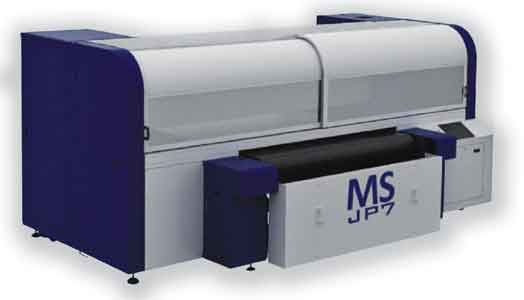 MS Printing Solutions, known for its range of digital printing machines is set to launch MS steamers that do not depend on steam from a boiler but generates the steam on its own. “Our aim is to deliver consistent quality. We also plan to launch special effects for digital printing, which would be related to pattern making,” explains Lasse Pilgaard, Sales manager, M S Printing Solultions.
MS Printing Solutions, known for its range of digital printing machines is set to launch MS steamers that do not depend on steam from a boiler but generates the steam on its own. “Our aim is to deliver consistent quality. We also plan to launch special effects for digital printing, which would be related to pattern making,” explains Lasse Pilgaard, Sales manager, M S Printing Solultions.
Wide range of digital printing machines
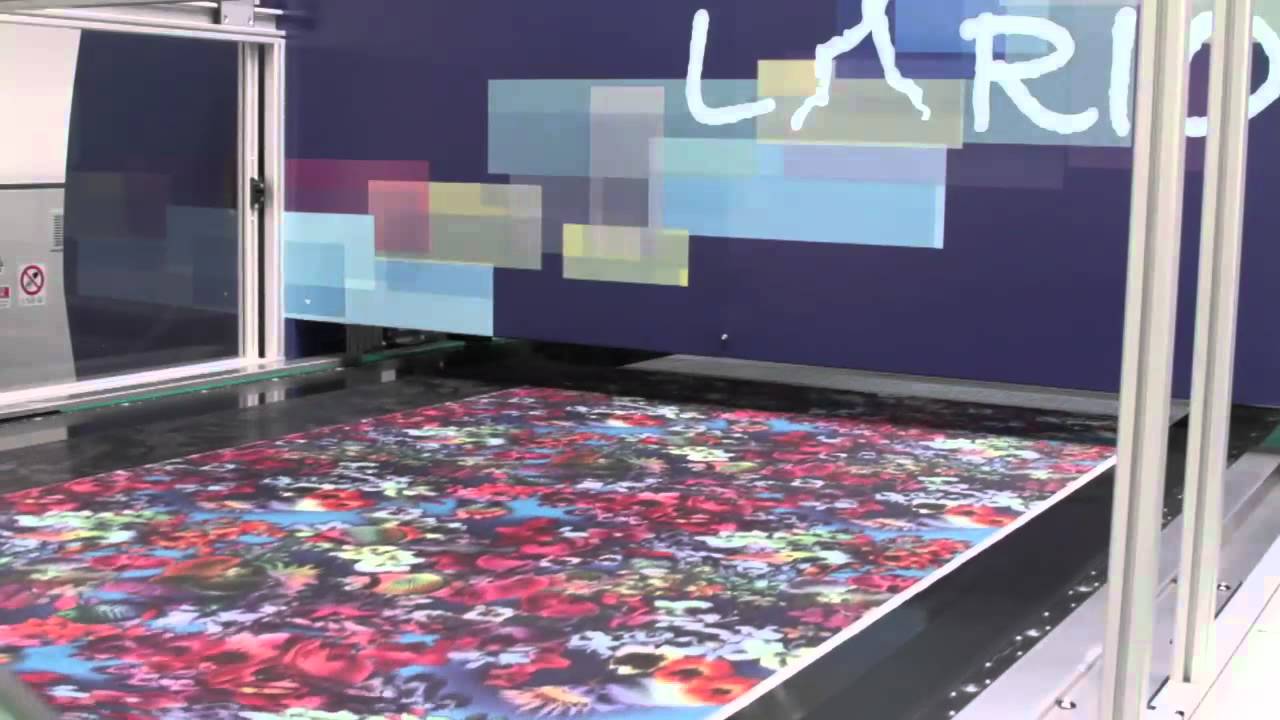
The company is known to treat the fabric after printing. “It is the only company in the world to have a full range of products for fabric and for sublimation,” says Pilgaard, adding, “Our machines go from a production speed of 100 mt per hour to 75 mt. a minute. The Lario machine is the fastest machine in the digital market today. This is a single pass machine. The machine is built in the same way as a rotary printing machine. But instead of screens we have a bridge with digital pinheads. Each bridge prints one column like in a rotary printing machine. This machine can print up to 75 meters in a minute. There is no comparable machine in the market today.”
The way this machine is built differs from the way other machines are. All other machines are usually scanning machines, wherein pinheads are installed on a carriage that moves back and forth and prints on the fabric or paper. MS Printing machines use the same pinheads for all models. So from its smallest to the biggest machine, the company guarantees the same print results. So if a client starts with a small machine and later decides to upgrade to a bigger one in future, he will get the same print result. This is an important feature for any printer in the world. The small machines have a standard working width of 1.8 meters and the JPK Evo and Lario can work on up to 3.2 meters.
“In our machines we have an open ink system. So you can choose any ink manufacturer you want as long as the ink has been approved by the print-head manufacturer. We use Japan’s Kyocera print heads in all our machines, which is the fastest print-head in the market today,” elaborates Pilgaard.
Stronghold in production and distribution
The company sells its machinery range in more than 50 countries around the world. It makes 15 to 20 machines a month. Elaborating on the distribution strength, Pilgaard says, “We are the largest manufacturer worldwide. China is our biggest market. We have sold some 100 machines in the Chinese market. These machines have been sold to different buyers, but one buyer may take two or three machines. Turkey is also a big market. Pakistan is coming up very fast. We are very competitive in terms of cost. Chinese machines are cheaper but they don’t have the same speed and reliability.”
MS Printing range is produced in Italy and it has offices in China, Brazil and India. “India is picking up and will soon become a big market for us,” he avers, adding, “Compared to the entire printing market, digital printing is only three percent. So there is a huge potential. In three to four years, I expect it to be 15 percent of the total printing machinery market. In the digital printing market my brand has a 50 percent share.”
The spinning sector in India needs immediate attention. In view of the weak financial position and reduced cash flows, the sector needs immediate extension of interest subvention. A huge proportion of spinning mills in the country have a low non-investment grade rating that could deny them any scope for further borrowings from banks. This means, the financial health of the mills has been deteriorating and non-performing assets (NPA) rising.
Not only is profitability of spinning mills diminishing, the average EBITDA margins (earnings before interests, taxes, depreciation and amortization) declined sharply in the case of large mills from 14.8 per cent in 2013-14 to 11.3 per cent in 2014-15 fiscal. Similarly, EBITDA margins of small sized mills declined from 7.7 per cent in 2013-14 to 4.7 per cent in 2014-15.
Extending interest subvention would boost the prowess of labor-intensive spinning sector and reduce NPAs of public sector banks. Every additional Rs 10 lakh revenues in the spinning sector could generate employment for 16 more people.
As of December 2014, public sector banks reported gross NPA of 10 per cent of their advances to the cotton-based textile sector against five per cent registered in December 2012.
Only one per cent out of garment factories surveyed in Bangladesh have trade unions while 55 per cent don’t even have any participation committees. Some 643 factories were surveyed from January to March 2015. Of these, 356 are members of the Bangladesh Garment Manufacturers and Exporters Association (BGMEA) and 129 are members of the Bangladesh Knitwear Manufacturers and Exporters Association (BKMEA) while 158 others don’t have affiliation with either of the two trade bodies.
However, 53 per cent of BGMEA factories and 43 per cent of BKMEA factories have participation committees. Participation committees comprise representatives from both factory owners and workers that, according to labor leaders, actually work in favor of owners.
Some 3,740 garment factories are now operating across the country. In 2013, the government amended the Bangladesh Labor Law, 2006, simplifying trade union formation for garment workers to bargain for their rights, amid pressure from local and international arenas, especially after the Rana Plaza building collapse.
Since then, more than 300 new trade unions have got government registration in the last two years, raising the total number to 427. Non-cooperation from owners, fear of losing jobs and some legal complexities are major reasons for the relatively low number of unions in the country’s readymade garment sector that employs some four million workers.



